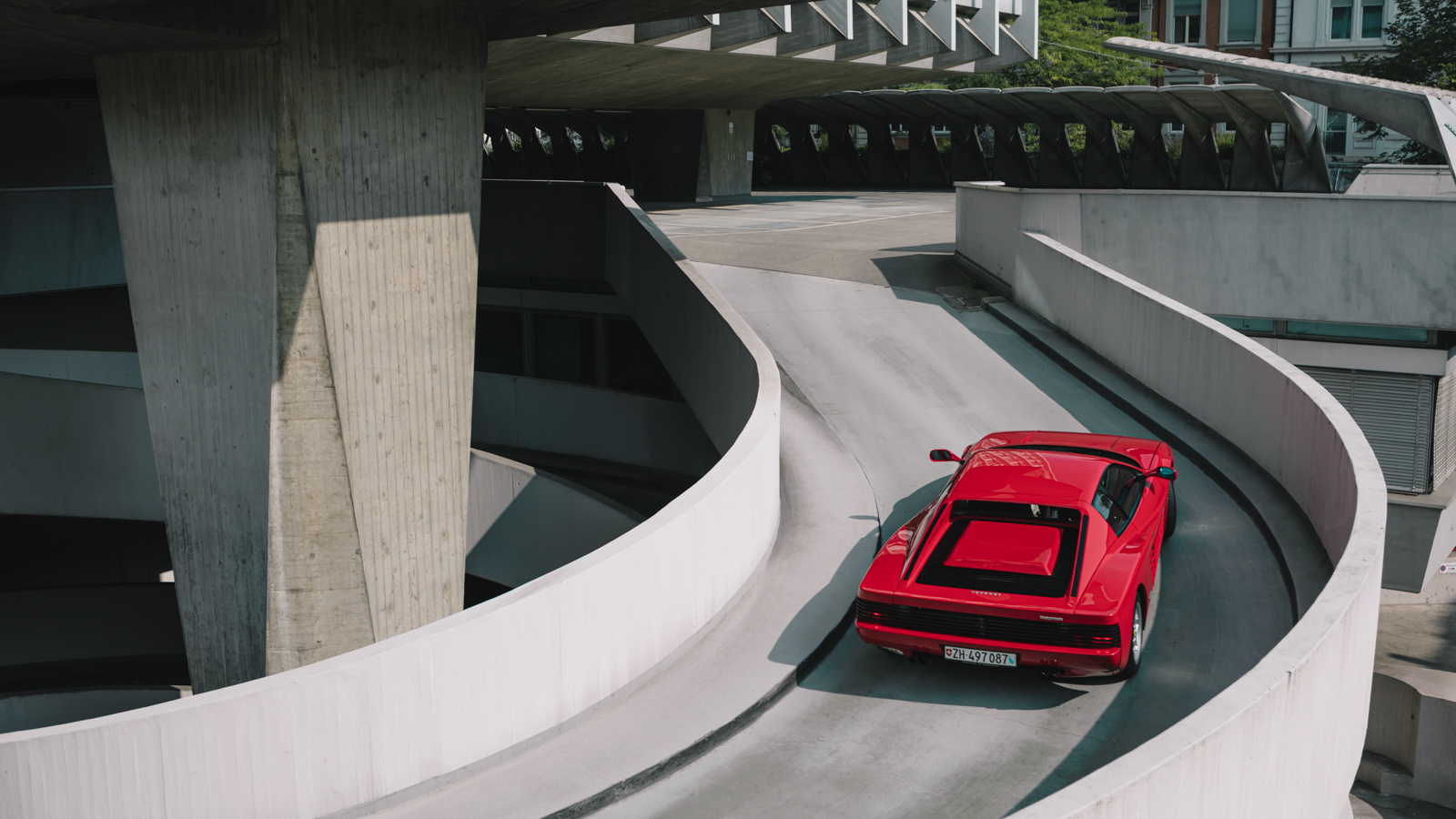
I think that in almost all my photos I can show my great love, passion, and respect for architecture and cars. That’s why I could say that this shooting is one of the best I’ve ever done in the almost 7 years I’ve been specializing in cars.
This time I was in one of the most prominent buildings of Swiss Brutalist architecture, combined with one of the great icons of the 80s, the Testarossa. Together with my friend Fabio, an architect, also passionate about cars and owner of this fantastic Ferrari we managed to do this unique shooting to celebrate our passion for both design icons in this great building that was considered progressive at the time for revolving its design around the automobile.
Something very interesting and curious about this building is that it was built in the mid-60s by architects Max Ernst Haefeli, Werner Max Moser, and Rudolf Steiger on the same land where there was a classicist 19th-century villa with a renowned lush garden that had to make way for one of the oldest high rise of Zurich the Hochhaus zur Palme, which also the name comes from that villa.
Speaking of the Testarossa, I think that for many, and at least for me is a car that brings back many memories and that does not fail to impress with its radical design every time we see it on the streets. To go deeper into the history of this particular Testarossa and its owner I did a little interview with Fabio to know more about it.
Tell me about yourself.
My name is Fabio and I’m an architect.
Tell me how your passion for cars began.
As often happens in life, it all started quite accidentally. I grew up in Italy, in a family not particularly interested in cars, I guess what makes me interested in cars was the environment in the broadest sense that influenced me. In a proto-internet era, a lot of information was the result of more or less romantic word of mouth, and obviously, the absolute myth for us when we were kids was the AutoDelta, the engineer Carlo Chiti, and the Alfa Romeo racing cars that were built in my hometown (Udine). Encounters with “sports cars” when I was a teenager were very frequent in my hometown and in my region. They were mainly Italian cars of different eras, Lancia (Delta and Fulvia), Alfa Romeo (GTV, Montreal, 75) but also many Maserati (Biturbo) Ferrari, especially the eight cylinders of the time, 328 and F355 and Lamborghini like the Diablo. Sporadically I remember other exotic cars, such as the blue Dodge Viper of the Norwegian designer Jan Sabro, very active professionally in my region at that time.






How did you come by this Testarossa?
At the time my goal was a 308 Pininfarina, but they were hard to find in good condition and above all, their cockpit was too small considering that I am 190cm tall. So while visiting different dealers I remember seeing next to a 308, a Testarossa. It was around 2016 and I was at the Ferrari/Maserati dealership in Altendorf on Lake Zurich owned by Gregor Foitek, the Swiss F1 racer. This is where the idea of a Testarossa took shape, and finally, I found it through a Swiss classic car dealer.
Are there any curious anecdotes about this car from previous owners?
Unfortunately, I don’t know the history of the previous owners, I was so concentrated on the car that I didn’t go into its history. I do remember that during the first months of ownership the old owner visited me at my garage, although I’d never met him before at the dealership.
What do you like most about your car?
Definitely the sound of the V12 with flat layout, which is unique among Ferrari road engines, then it’s a fantastic GT. But overall, it’s quite quiet, with a fairly soft suspension. Functional climate control and great cargo capacity in the front trunk.
As an architect, what detail do you think makes the Testa special?
It is difficult for me to judge a car and a design outside of my profession as an architect. Everything I see and does is heavily influenced by my education and my profession.
When I look at this car, they are many details that I like the most, for example, the dual “pup-up” lights, the black grille covering the taillights, the large mirror in the glove compartment, and the illuminated ashtrays on the doors. But if I have to pick just one, definitely it’s the grilles/air intakes found on the sides of the car. They are insane when the doors are closed, but even more incredible when opening the door, that’s when you realize how they are constructed and the thickness the door takes because of them.
The most incredible thing is that these grids are so iconic, it seems that they were not foreseen in Pininfarina’s original project but were inserted in a very advanced phase of design, to meet safety requirements.
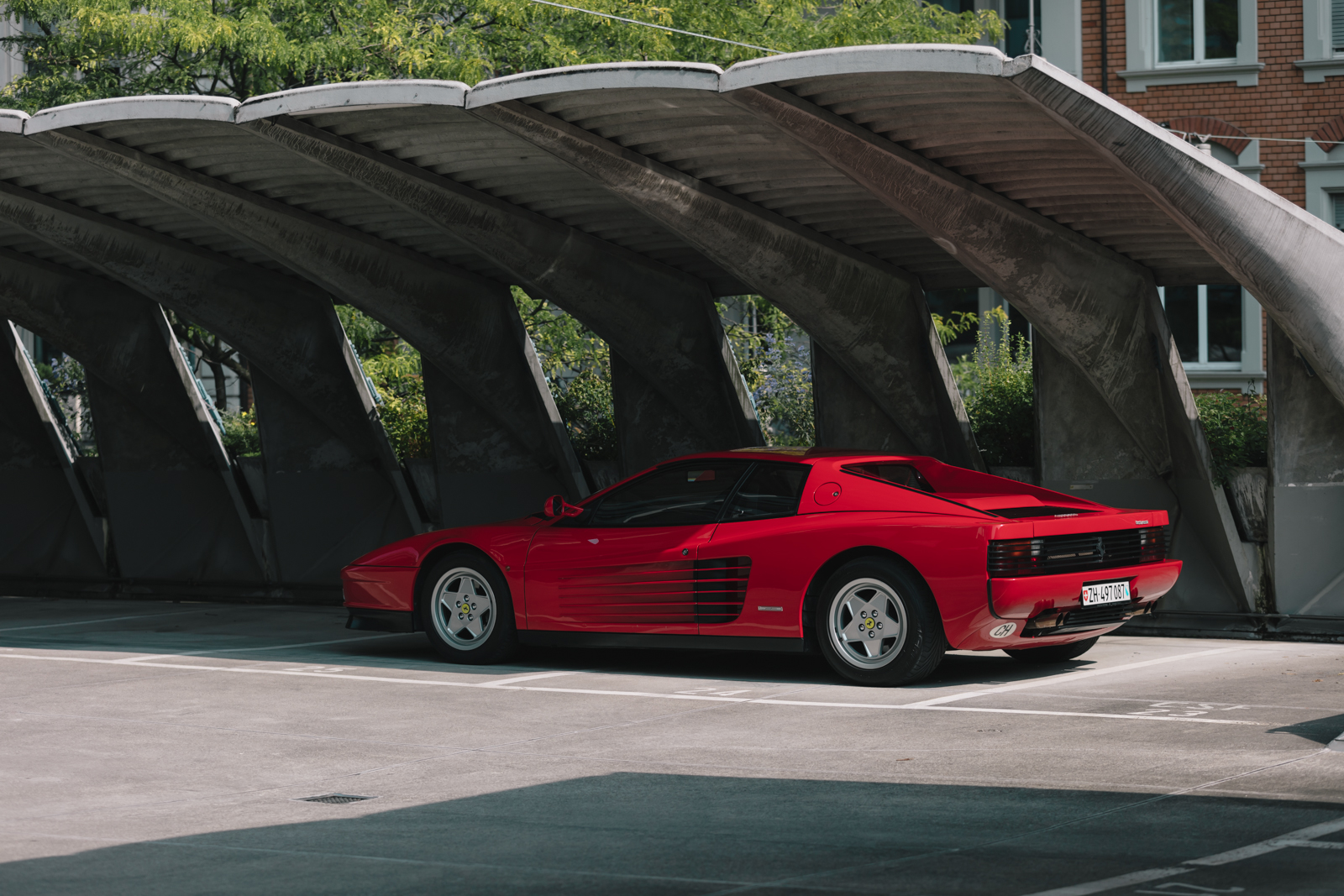

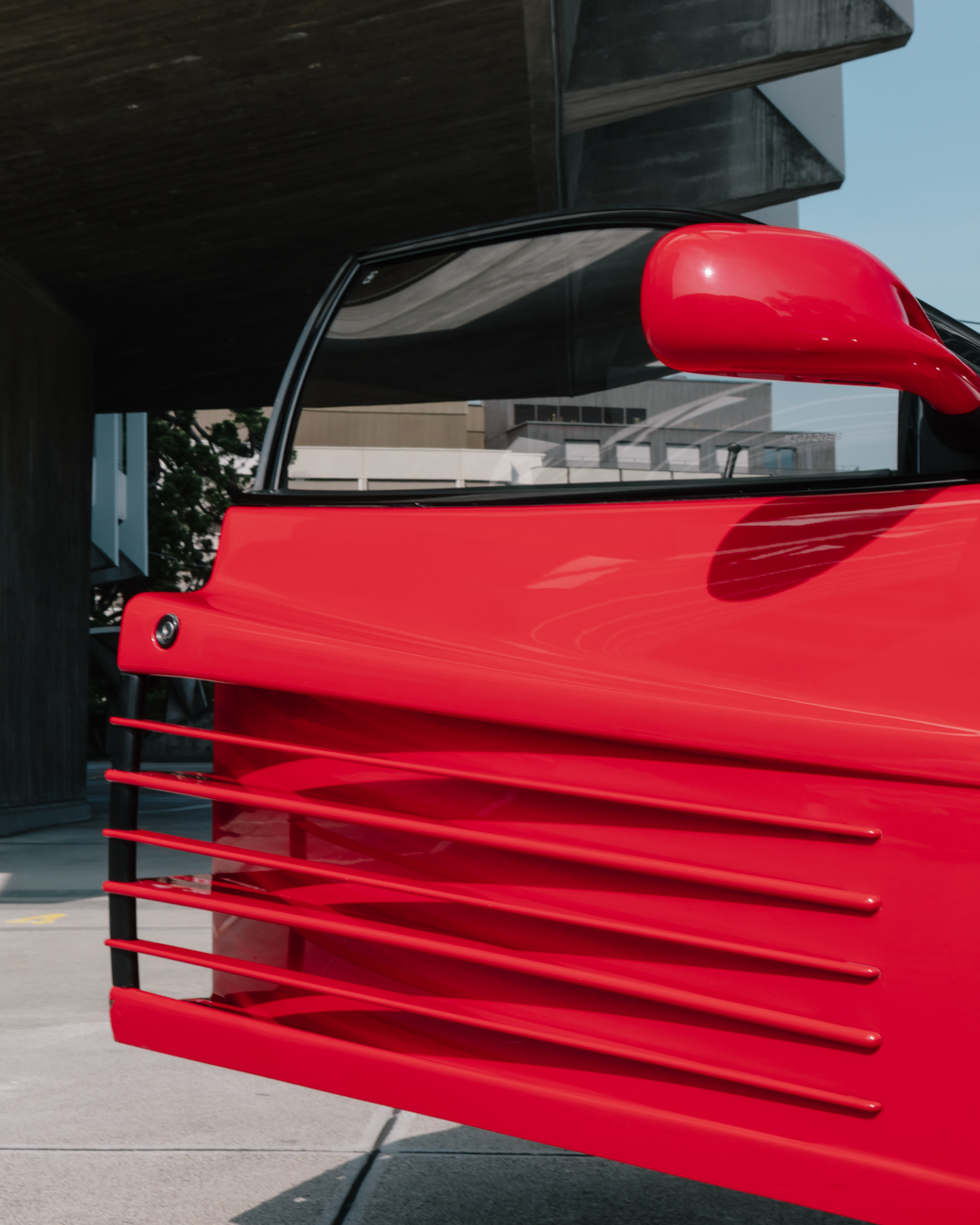




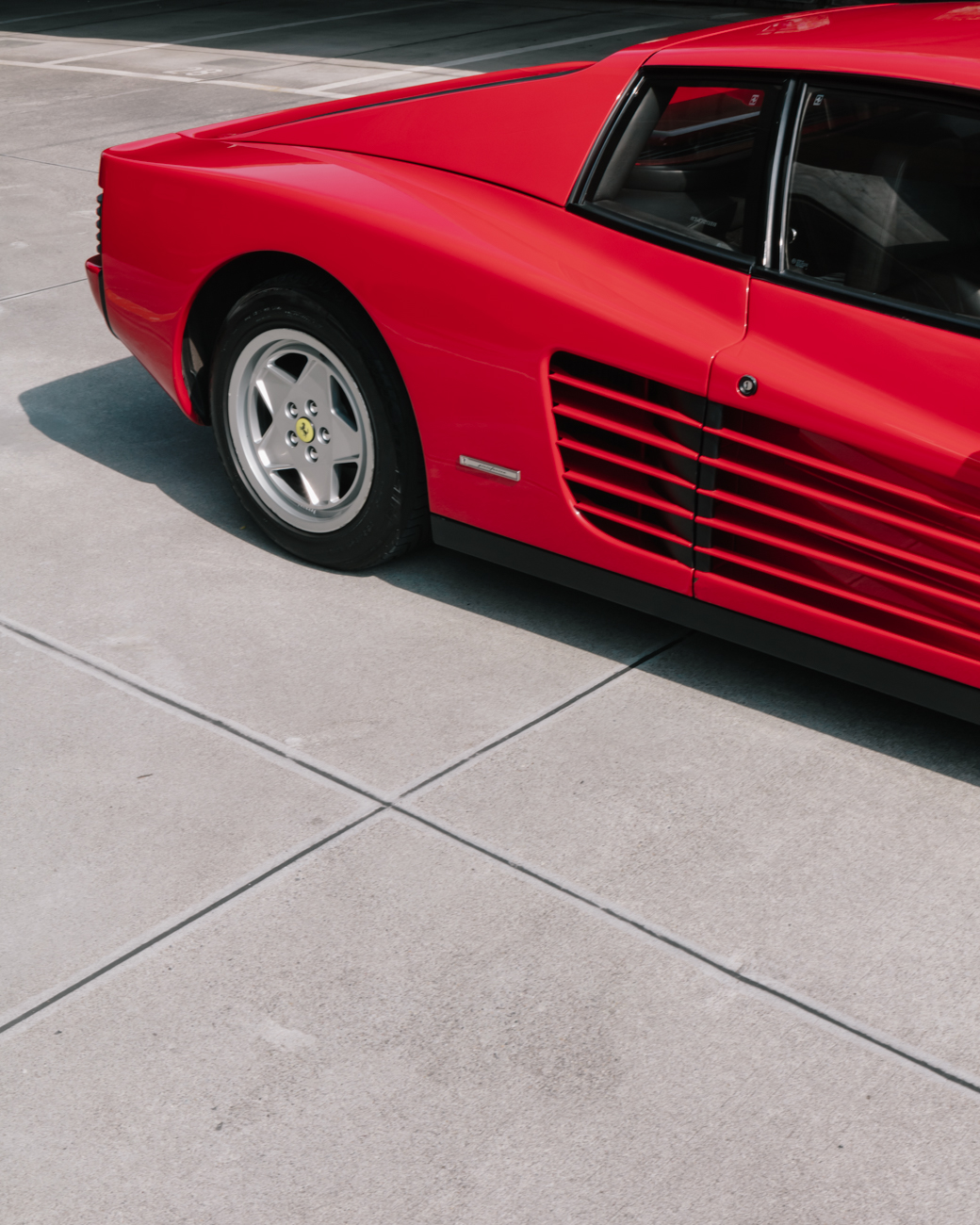

What do you think of the Testa with the pop-up headlights on, do you think it changes a lot in its visual, design-wise?
Absolutely. In a way they marked an era, I would say the excess of the ’80s. Of course, there were pop-up headlights on other Ferrari models of the time, for example, the 308 and 328, but also the 512 BB. But on the Testarossa they reach another level of radicality, especially considering the angular lines of the Testarossa compared to the smooth lines of the 512BB, they are set much further forward of the car’s grille. On the 512 BB, they are much further back, located behind the side headlights. Although the 512 BB is, overall, a much sleeker car in terms of lines, it does not reach the excesses and level of radicality of Testarossa’s design. Many of the 512BB’s ideas can be found in Pininfarina’s 208 GTB/GTS and 308 GTB/GTS, while the Testarossa has no precedents or epigones.
Is this car a source of inspiration for you and your work?
In a way, yes. I like it when a certain design solution is somehow the result of a technical necessity. In this sense, one of the elements that certainly characterizes this car the most is its width, especially near the rear axle and therefore the engine. It is precisely the presence and size of the engine, with its famous flat V12 layout, that makes the car’s width so marked, made even more extreme by the integration of the water cooling radiators between the doors and the wheel arches.
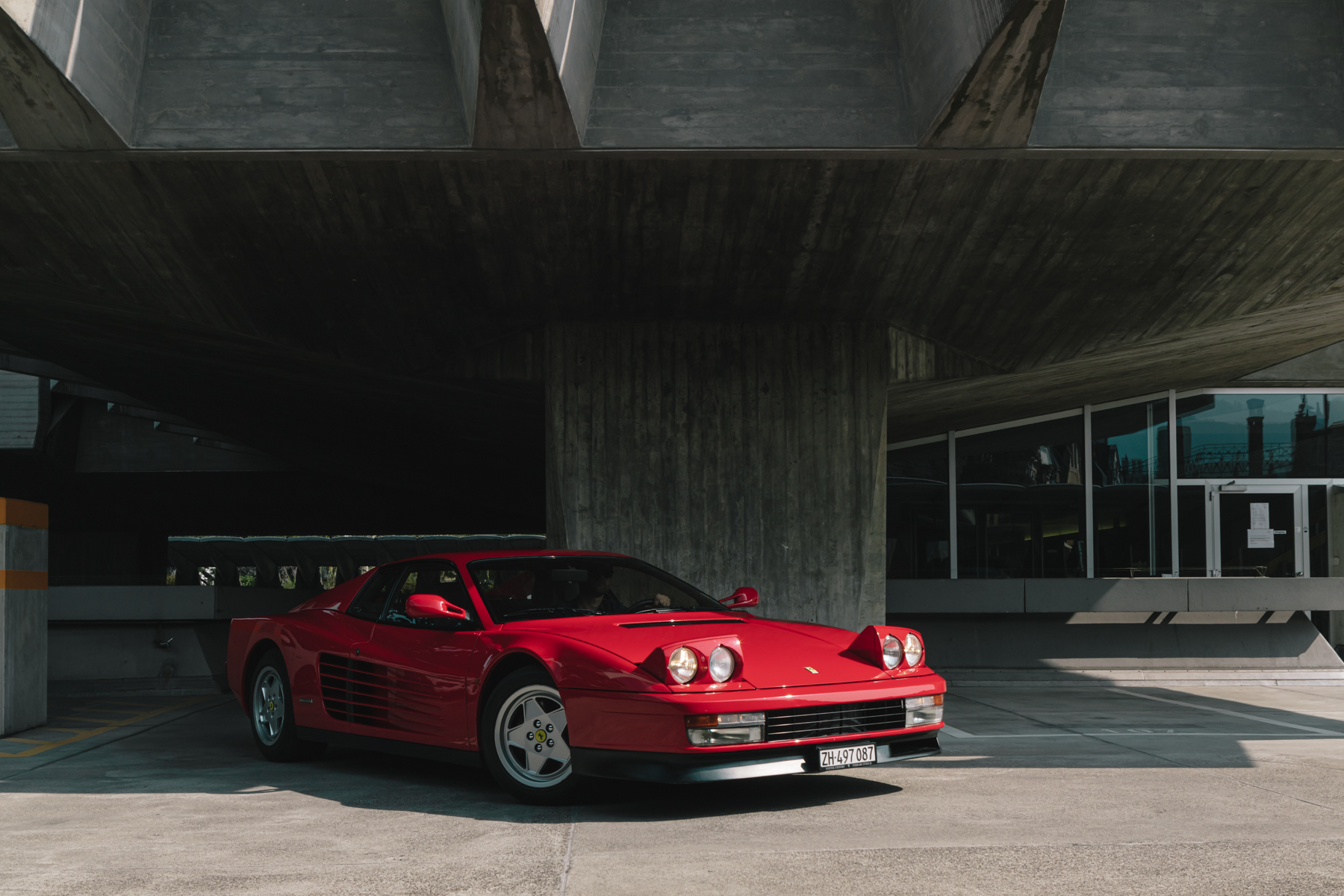
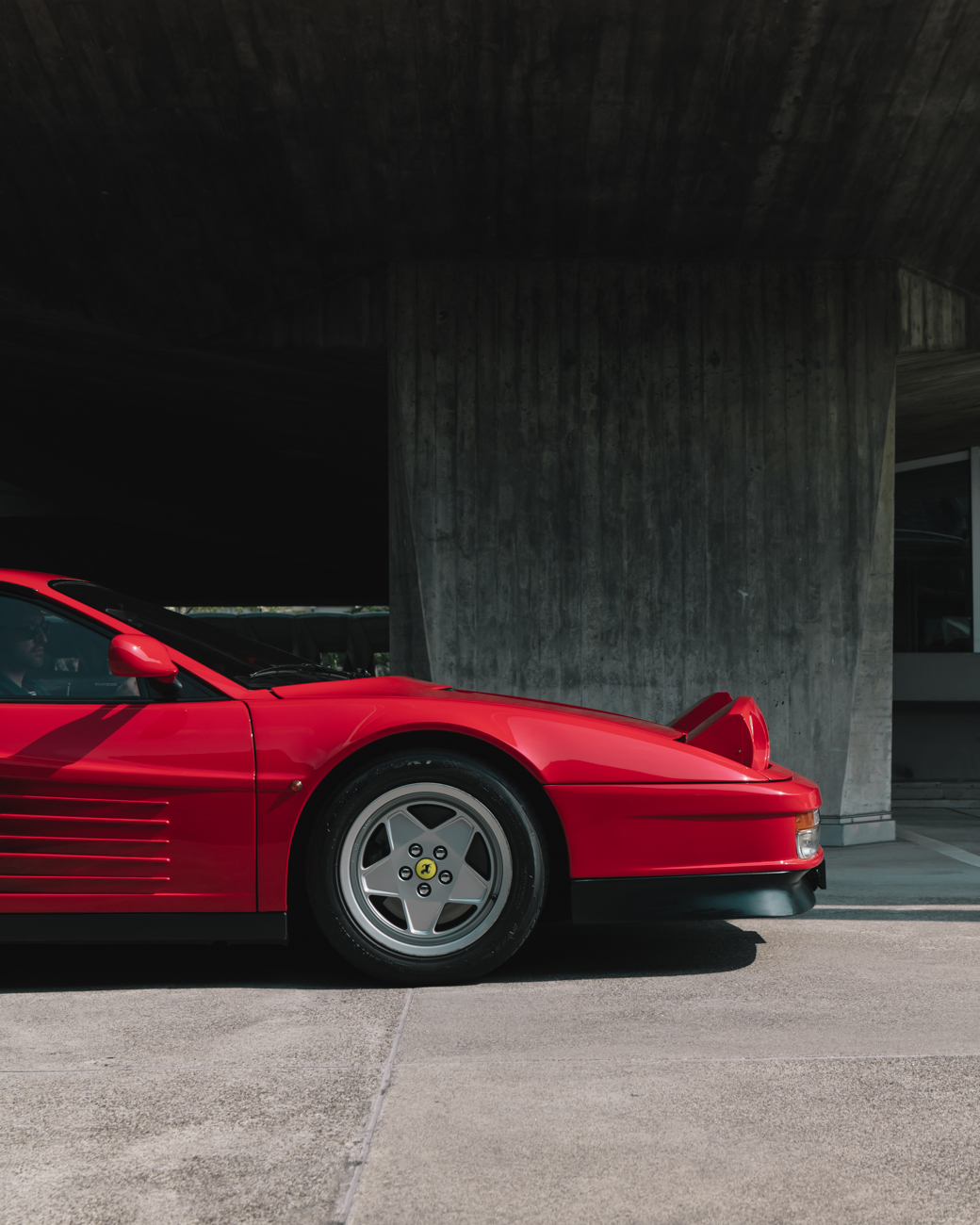



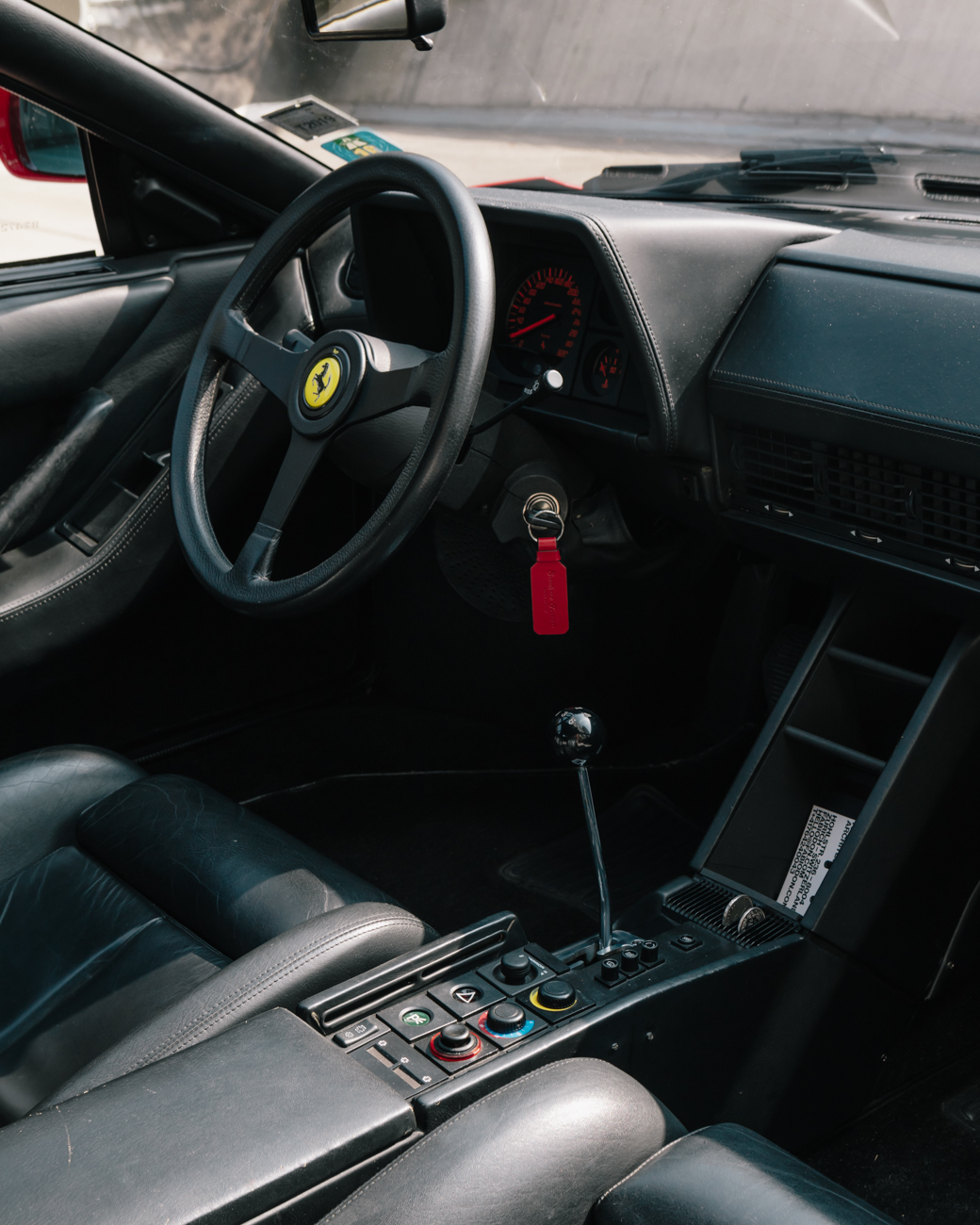

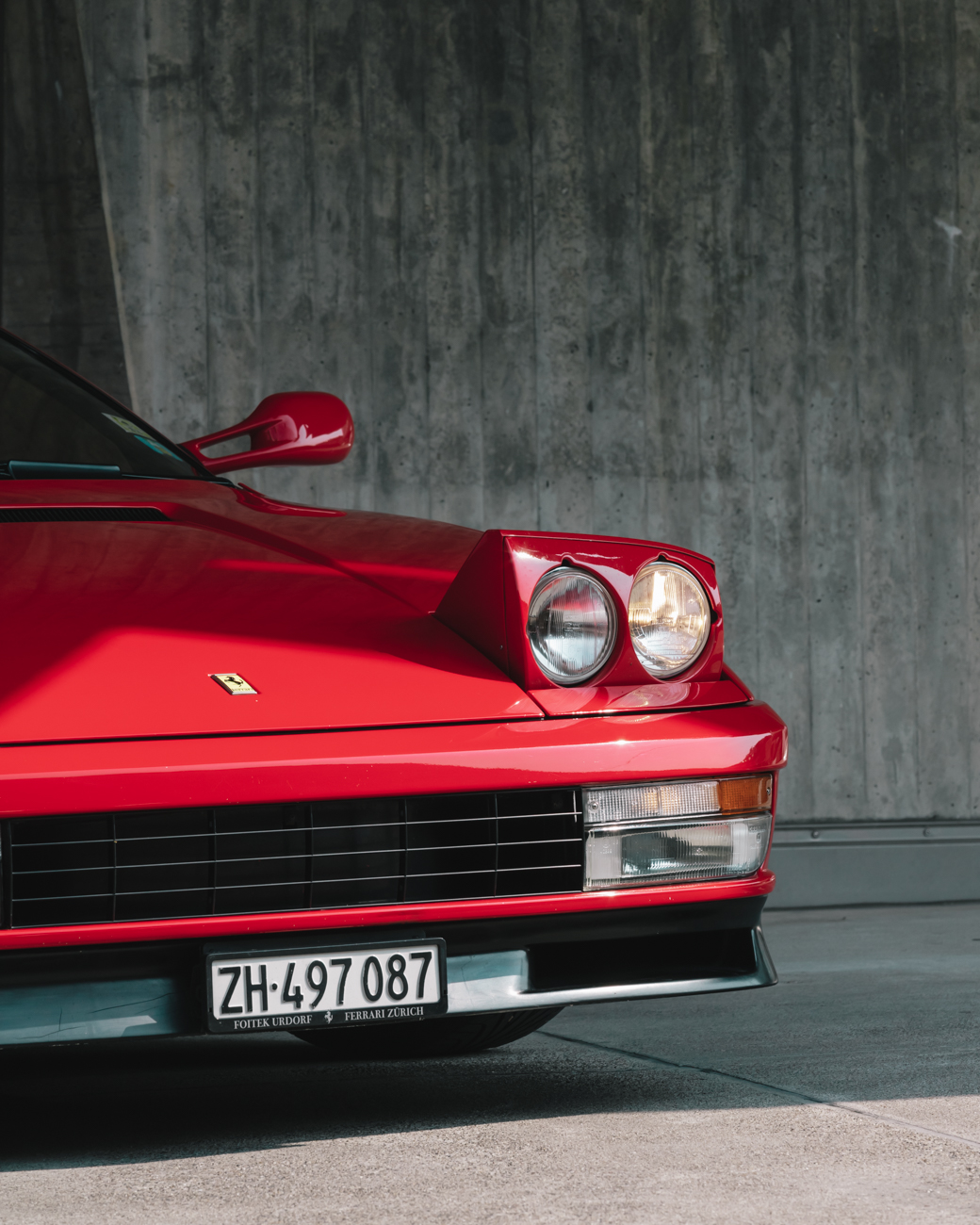




What would be your dream garage, architecturally speaking and of course which cars would you like to have in there?
A neutral space, long and narrow, where cars are arranged in rows and can be seen all together at a glance. For example, I can imagine a space made out of a single material, maybe mirror-like in the Mirage Pavilion by Doug Aitken, without pillars but with a very high ceiling, perhaps vaulted.
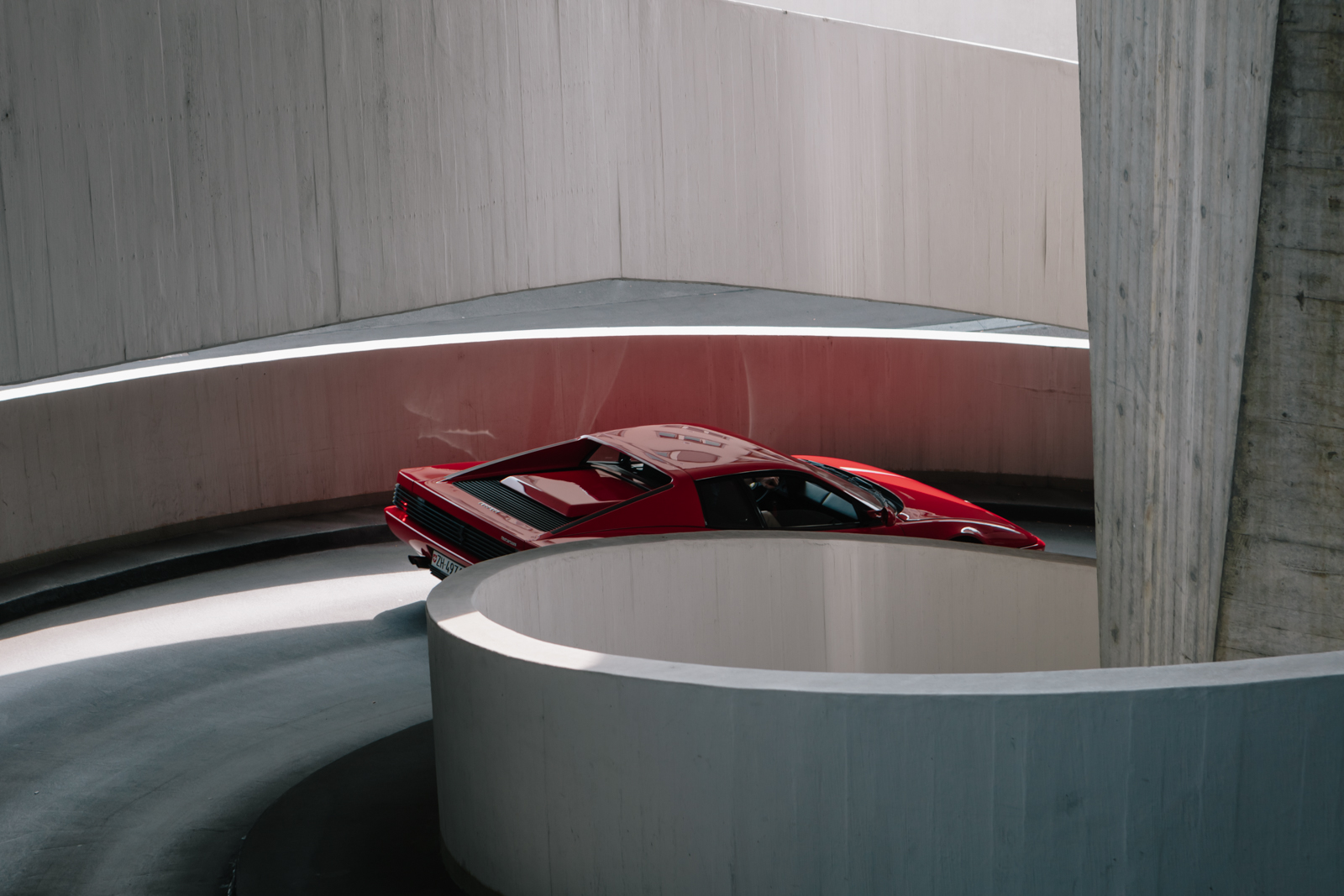



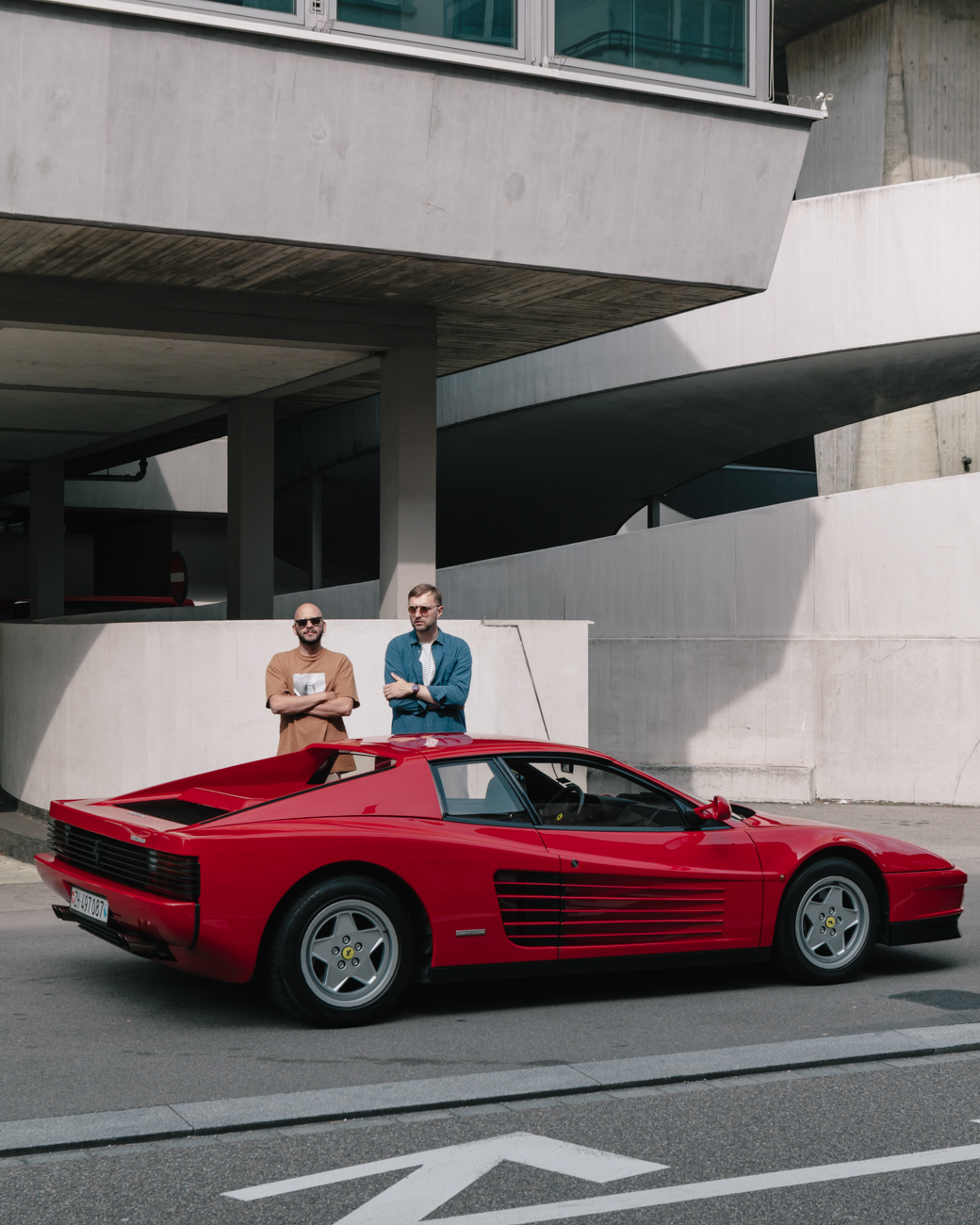
Related Articles
Restoring the Alfa Romeo Giulia 1600 Sprint Speciale: A Rare Beauty Reborn in Berlin
A rare Alfa Romeo Giulia Sprint Speciale was restored in Berlin by master craftsmen Siegmar Prätor and Christian Schmidt. Owner Phillip shares the full story in this exclusive interview.
Remembering Marcello Gandini: A Tribute Through His Iconic Car Designs
Remembering Marcello Gandini: Best known for his revolutionary work for Lamborghini and Lancia, leaves behind a legacy of timeless designs.
PrinzipR: The Architects of 911 Dreams, Specializing in Backdate Projects
by Alexberlinetta It was a pleasure to meet and photograph the new PrinzipR project a few weeks ago. Staying true to my usual approach, I specifically chose one of the emblematic buildings representing Berlin’s high-tech architecture that perfectly...
SOCIAL MEDIA

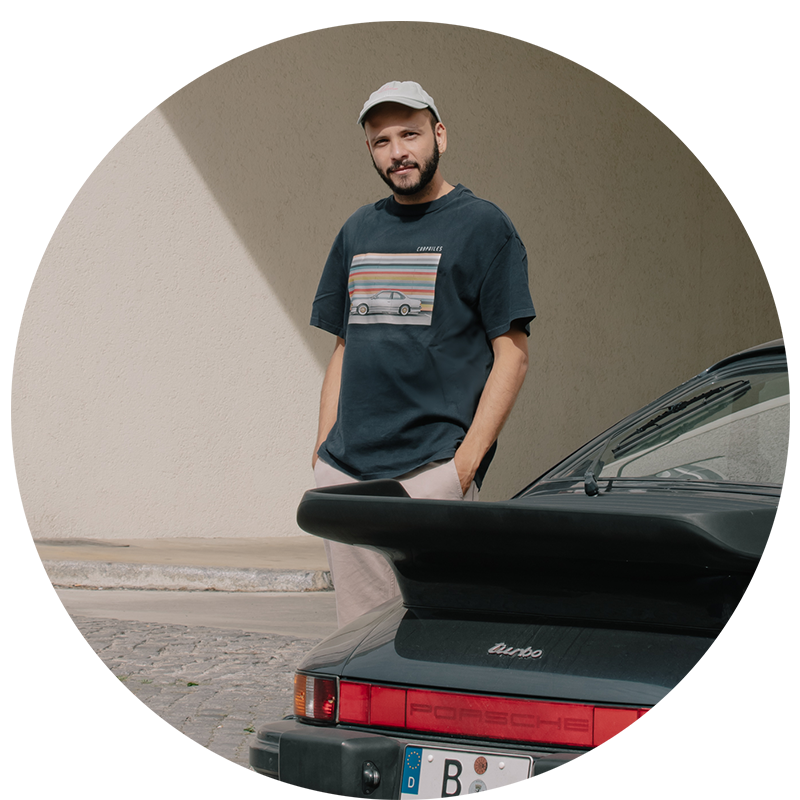

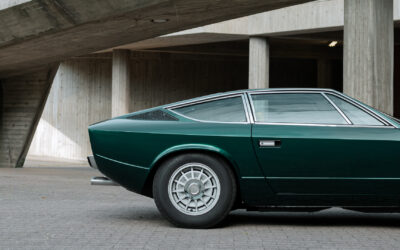
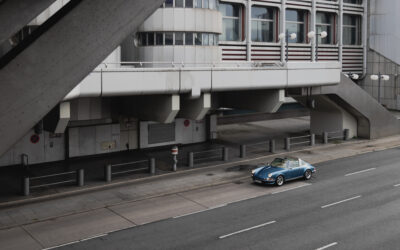
0 Comments